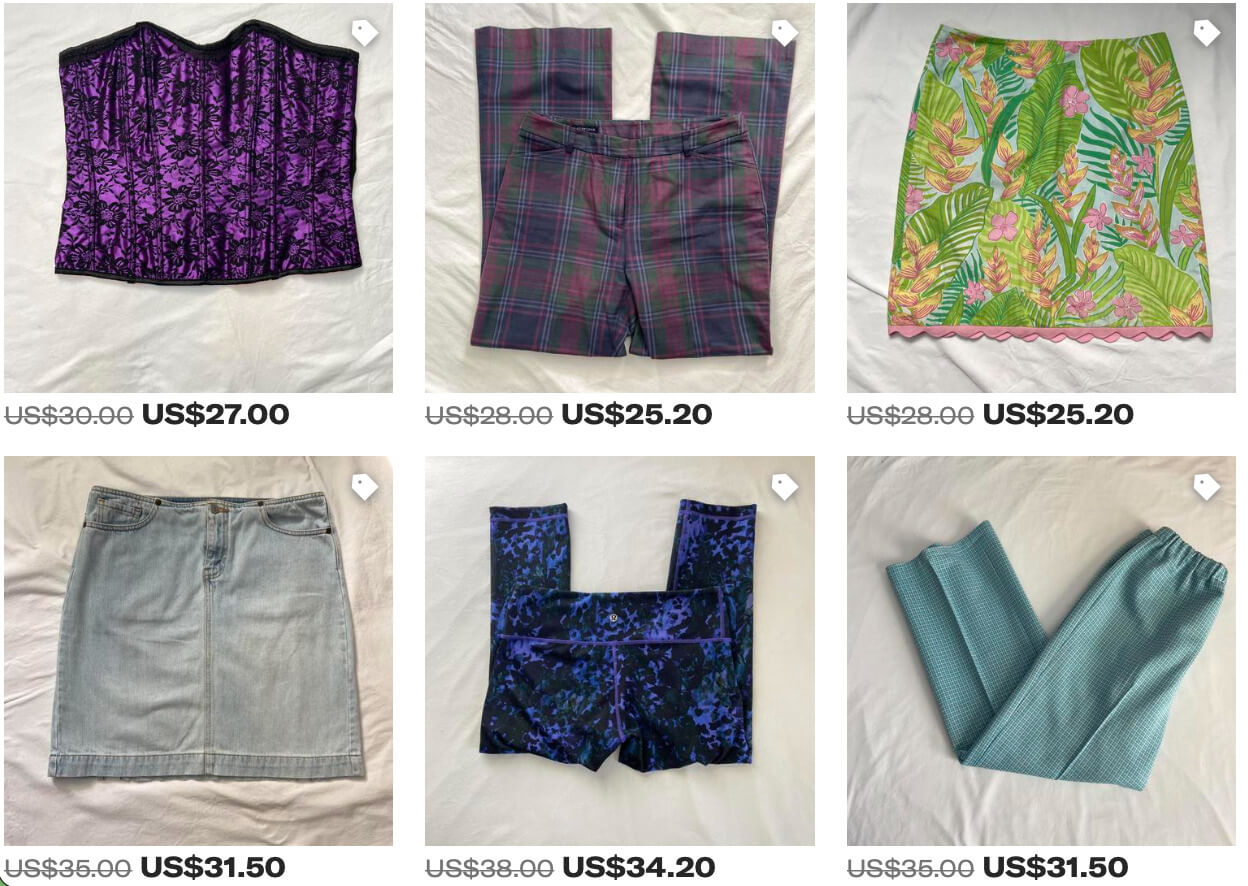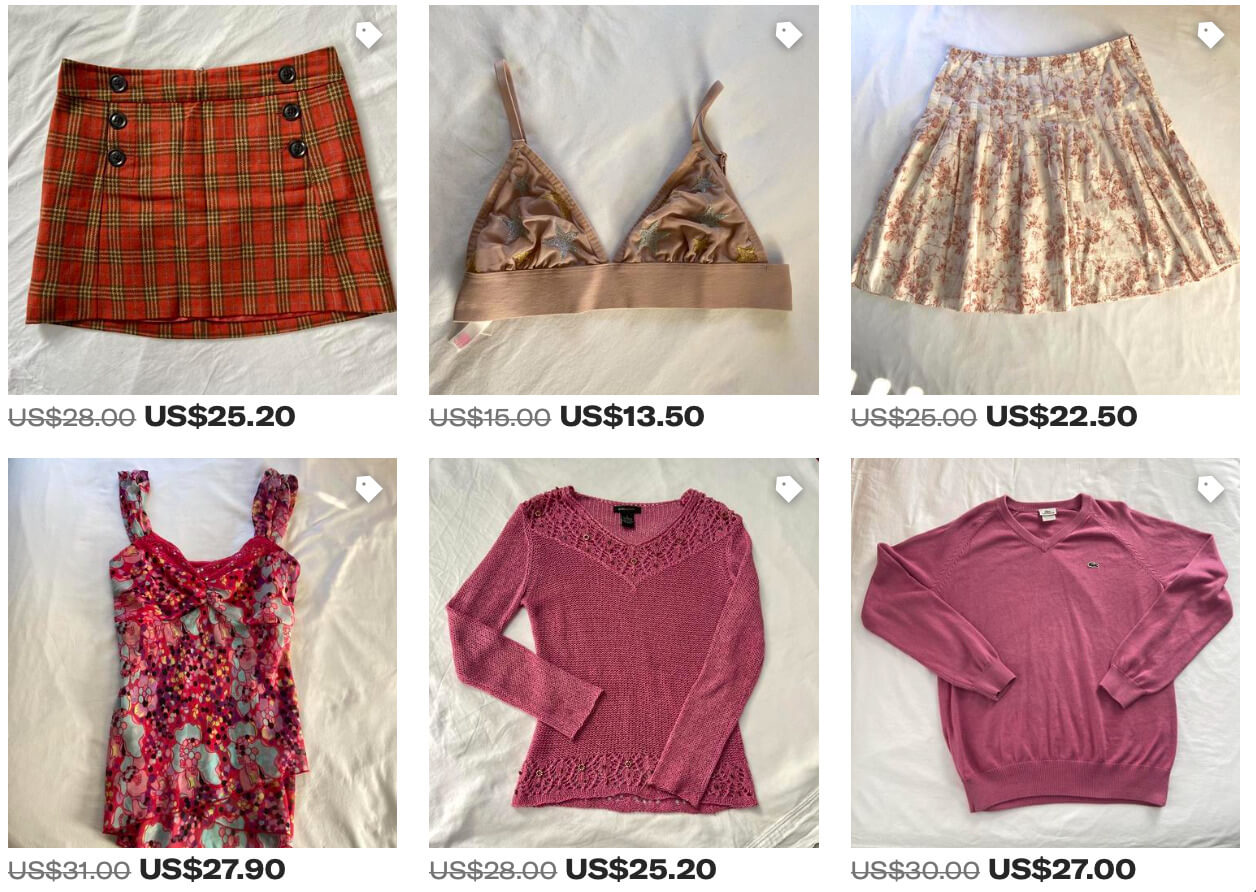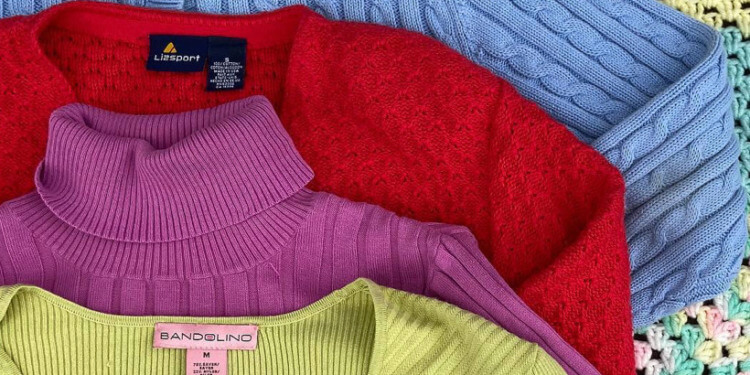Hope of eradicating the fast fashion industry is rising as more secondhand clothing stores emerge, many of which are owned by one individual and operated through social media or apps like Depop and Mercari.
TRENDPEDDLERS
Hannah Kelly, a 20 year old reseller from Rhode Island, US, began TRENDPEDDLERS in 2019 when she took a hard look at her closet and realized she had too many clothes. She opened a Depop account and was pleasantly surprised to see her business take off.

“I enjoy being able to have a flexible schedule,” Hannah said. “Sourcing the clothes is the best part, then I wash and fix any imperfections, photograph the piece and write the listing in detail online.”
She stores the clothes in her closets in bins and bags. Unlisted items hang on a rack for easier access. Listing is tedious and takes the most time. However, properly detailing an item is a key factor to increase the likelihood of getting it sold. In addition, photographs for each item can make or break the post.
“Being plus size, it’s harder to find plus size items that fit me and can model,” Hannah said. “So sometimes I’ll flat lay items or hire a model which is typically my biggest struggle. But clothes absolutely sell better when modeled.”
Recently, Hannah has seen her sales go down as a result of the expanding secondhand clothing market. Reselling businesses are increasingly saturated and it’s more difficult to be seen. A previous update to the algorithm of Depop has also contributed to decreasing exposure of her account on buyer’s feeds. To combat this, she now sells on Mercari, as well as constantly revamping ideas and finding new, creative ways to source and present items online.

Reselling Success
TRENDPEDDLERS celebrated a milestone as of March 6th for 550 items sold! Hannah hopes to continue to grow her business, eventually buy a storefront, and operate it as a secondhand boutique or vintage shop. She believes in transparency of businesses and is highly aware of the overproduction and greenwashing that major fast fashion companies take part in.

“I am the first person to try and educate someone else about the horrible effects these companies are creating,” Hannah said. “They are increasing pollution and waste, making poorly constructed clothes, and putting their workers through awful conditions for very little pay.”
While competition for TRENDPEDDLERS has increased, she is happy to see so many more people becoming accepting of buying secondhand.
“I started thrifting when I was 11 years old and I felt kind of ashamed because people assumed my family didn’t have a lot of money, or that it was unsanitary and second best to buying new clothes,” Hannah said. “But as I developed my style and grew older, I understood the uniqueness and value of secondhand clothing.”
Running a business that is good for the environment, adaptable to her schedule, and unprecedented every day, makes Hannah so grateful to do what she does. Reselling contributes to a growing circular economy in fashion but allows her to be independent and self-driven.
The Future of Fashion
“Soon, I hope to attend school for fashion merchandising and take business classes. I want to be able to live off working for myself, being entirely self-sufficient, and free while doing something I love and am passionate about.”
Not ready to pillage the thrift shops for inventory? Starting with your own closet, your reselling business can start with zero upfront investment. Selling on fashion resale apps is an excellent way to sustainably get rid of clothes you no longer wear while making good money. Make sure to be mindful when fulfilling your orders by using sustainable packaging methods.
Editor’s Note: The opinions expressed here by Impakter.com columnists are their own, not those of Impakter.com. — In the Featured Photo: three sweaters are photographed for Depop listing. Featured Photo Credit: @trendpeddlers on Instagram.










